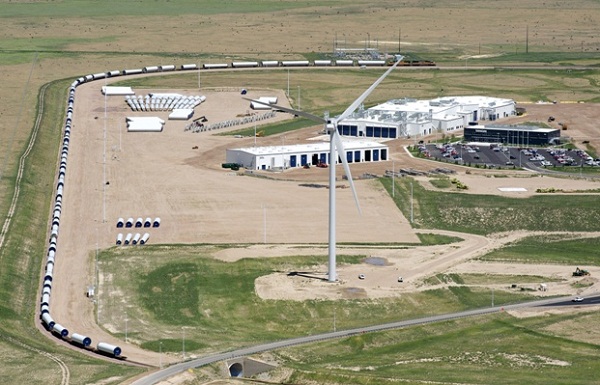The drip-drip-drip of wind-industry job losses is threatening to become a steady stream. On Monday, Vestas announced layoffs at its Pueblo, Colo., wind tower factory, a move it attributed to a market slowdown brought on by “uncertainty over whether Congress will extend the production tax credit (PTC).”
The Denmark-based company said the reduction at its Vestas Tower America plant would amount to 3 percent of its total U.S. and Canada workforce. Various Colorado media reported the layoff toll in Pueblo, where Vestas began making wind towers in 2009, at 90.

The PTC, set to expire at the end of this year, showed signs of life last week when an extension won approval as part of a Senate Finance Committee’s package of tax breaks. That’s just one step on a long journey, however. The legislation still needs to be approved by the full Senate as well as the House, and that’s not going to happen soon, not with Congress on August recess. The industry has been warning since late last year that a delay in extending the tax credit would begin to exact a jobs toll well before the actual expiration, and that appears to be coming to pass.
The American Wind Energy Association said four companies last week announced immediate or looming layoffs that by November could affect a total of at least 476 full-time employees at DMI Industries in Tulsa, Okla., and West Fargo, N.D.; LM Wind Power in Little Rock, Ark.; and Trinity Structural Towers in Dallas, Tex.
AWEA CEO Denise Bode said in a statement that the companies “represent what is happening and will continue to happen across the country in the U.S. wind industry if these businesses are not provided the policy certainty they need to continue to invest in America and its workers.”
The AWEA pointed to earlier layoffs as well, including Gamesa’s 165-worker drawdown in Pennsylvania and Windlogics’ trimming of 10 Minnesota employees.
In all, the organization sees 37,000 jobs at risk if the PTC isn’t renewed. Even with the layoffs already piling up, that might seem like hyperbole, except that outside analysts share the view that wind – responsible for 35 percent of all new electricity generation in the U.S. in the past five years – will falter without the support that government traditionally gives new forms of energy production.
In an AOL Energy white paper [PDF], analysts from IHS Emerging Energy Research forecast that “without the PTC, installations could collapse from an annual peak of 10.5 (gigawatts) in 2012 to as low as 1.5 GW in 2013.”
The 10.5 GW figure is inflated as companies rush to get projects online before the end-of-year PTC expiration. But since 2005 – even through the financial collapse – wind has been adding 5.6 GW a year in the U.S. on average. A falloff to 1.5 GW would be dramatic, any way you slice it.
One interesting aspect of the PTC fight has been to make it the major renewable-energy issue of the presidential campaign. This is a surprise and probably not what Republicans – hopeful of pummeling President Obama with the Solyndra bankruptcy – were counting on.

Yet just last week Obama was in Pueblo, knocking presumptive Republican nominee Mitt Romney for his opposition to a PTC extension, despite significant bipartisan support in swing states such as Colorado and Iowa. Obama’s message of support for wind could gain increased resonance as layoffs are announced in more states – and the president, in Iowa on Monday, again drew a distinction between the administration’s support for the PTC and Romney’s opposition to it.
Meanwhile, Romney’s recently anointed running mate, Rep. Paul Ryan (R-Wis.) was also in Iowa, where he did not mention the production tax credit.